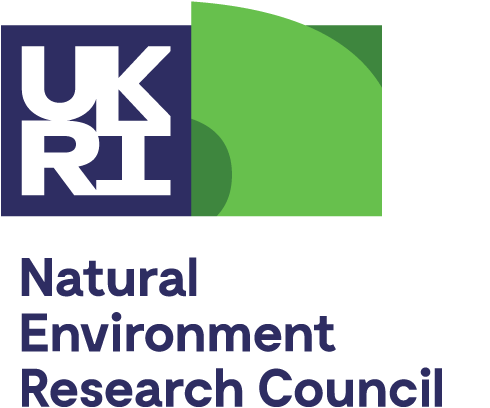Rare earth meeting in Japan
Three members of the SoS RARE team, Animesh Jha, Sergio Sanchez-Segado, and Frances Wall, attended the fifth Trilateral conference on critical materials in Tokyo on 26 October 2015 and then went on to a 'Critical Metal Symposium in Sendai' on 28, 29 October, where each presented current or recent work, including an introduction to SoS RARE. Animesh was European convenor for the Sendai symposium.
The Trilateral meeting is now an annual event that rotates around the three countries. Themes for the talks this year were measurements of criticality (Gian Andrea Bianchini, EU Joint Research Council, who are refining the criteria for the EU definition of critical materials, and Nadal Nasser of the USGS who are making a simpler and more general classification). There was discussion afterwards about the different approaches and how they might be compared.
As usual perhaps, more attention was paid to substitution and recycling of critical materials than to primary supply. Rod Eggert, of the Critical Materials Institute (CMI) and Colorado School of Mines, U.S. reminded the group not to forget about primary raw materials. There was a CMI presentation on research to add Ce to Al alloys in order to give mining companies another market for Ce and improve their economics, but no other research looking to expand use of REE and try to increase the market size and move the metals out of critical status. Alex King, Director of CMI, based at Ames Lab, told the meeting that we are not back to where we were in 2010 with regard to REE, even though the prices have fallen and the Mountain Pass mine has opened - and closed - again. Many more projects now have defined resources, with more than 10 through the pre-feasibility stage. There has been much R&D work on recycling and substitution of critical metals. He disagreed however with the Wall Street Journal that recently published an article saying that the REE crisis is over – far from it!
One of the highlights in the report from the European Union delegation was the start of the Knowledge Innovation Community – EIT Raw Materials and the recently appointed CEO, Ernst Lutz gave a talk on the vision for this initiative. Ernst is based in Berlin but the project has 160 partners grouped in six ‘colocation centres’ across Europe. It seeks to improve the links between research, and industry to take forward innovation projects and ensure the education and skills needed in industry.
It was good to meet colleagues from the CMI, both at the Trilateral and in Sendai. CMI is an official collaborator on the SoS RARE project. We have particular links on mineral processing and complement their research with much more on the geological aspects in SoS RARE but less penetration through the supply chain to recycling and substitution.
David Kennedy represented University of Birmingham and spoke about recycling of REE magnets from hard disk drives at the Trilaterial meeting. Another SoS RARE collaborator, Brajendra Mishra, now of Worcester Polytechnic Institute, USA, spoke about recycling REE permanent magnet swarf (manufacturing waste) and REE phosphors.
Frances’ talk on SoS RARE was the only presentation to show geological studies, featuring pictures form Lofdal, Namibia and Sam Broom-Fendley’s recent work on the Songwe carbonatite, Malawi. Animesh also talked about processing of primary materials with his presentation on alkali roasting of mineral sand deposits. Sergio presented results from his Marie Curie fellowship in which he worked on novel methods of processing Ta, Nb ores.
Chen Zhangeng of the Chinese Society of Rare Earths assured the meeting in Sendai that China can give a stable supply of rare earths for the foreseeable future. The Chinese Government has been working to consolidate the many small companies into six large groups and to put an end to illegal mining. He mentioned that the large waste tips at Baotou, often featured in pictures are now closed.
Sendai is a very pleasant city, beautiful in autumn. The Tohoku University campuses are set back form the port and escaped some of the worst of the damage in the earthquake and tsunami. Three students from the university lost their lives and 300 million dollars-worth of damage was caused to university buildings. The Japanese attitude is one of ‘never give up’, and one of the regeneration programmes is called ‘Tohoku Innovative Materials Technology Initiatives for Reconstruction’. One of the main research area is recycling of e-scrap and new chemical extraction processes for PGM and REE (including ionic liquids). The goal is to foster industrial expansion and create new industries and employment in the region. The programme is sponsored by the Ministry of Education, Culture, Sports, Science and Technology, Japan (MEXT). One of the new equipment purchases is a SELFRAG lab pulsed high voltage disaggregation equipment, which is teamed with a LIBS sorter to break and sort components from printed circuit boards.
After the Sendai meeting, a smaller group took a coach journey to the norther Japanese former mining town of Odate. We toured the Eco-recycling plant and Kosaka non ferrous metal smelter. It was fascinating to see recycling of E-waste being done for real. Much of the material arriving at the smelter seemed to be industrial manufacturing waste rather than domestic waste. We saw recycling of fridges, TVs, air conditioners at Eco-recycling. The main recycling in Japan is of these large domestic appliances. Japanese colleagues mentioned that they thing the EU has superior recycling legislation in the WEEE directive because in Japan, the owner of the appliance must pay directly to have it recycled. It is cheaper to see the appliance for a token amount, and then it goes abroad to be disassembled in rather less than perfect environmental conditions. We also saw the recycling of small electronic appliances. Only 12% of cell phones and 10% of PCs are recycled. It takes two years for the plant to assemble a bag of phones for recycling. All the Li batteries are removed. Some components such as the REE-bearing voice coil motors can also be removed but their value is very low. The phones end up in the smelter where the main products recovered are Cu, Au, Ag, plus some Zn, Pb. In theory the smelter can also recover Sn and In. So out of the 73 elements now needed to manufacture a smartphone, not much stays in the circular economy! And where are the 88% of phones not recycled – well it seems that in Japan, same as the UK, most are still at home in the drawer!
All in all a very educational and productive set of meetings and wonderful hospitality in Japan. We would like to thank our hosts, Professor Takahada Nakamura and colleagues for all their work to convene the meeting and to Tohoku University and the European Commission for partial financial support for AJ and FW to attend.
Frances Wall 20 November 2015








